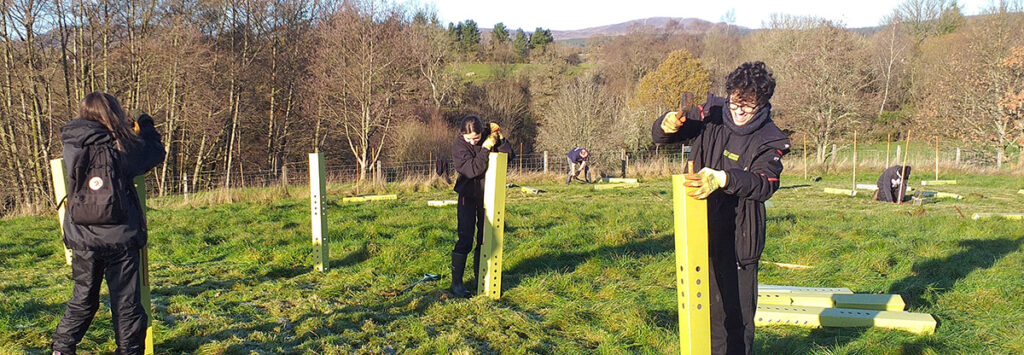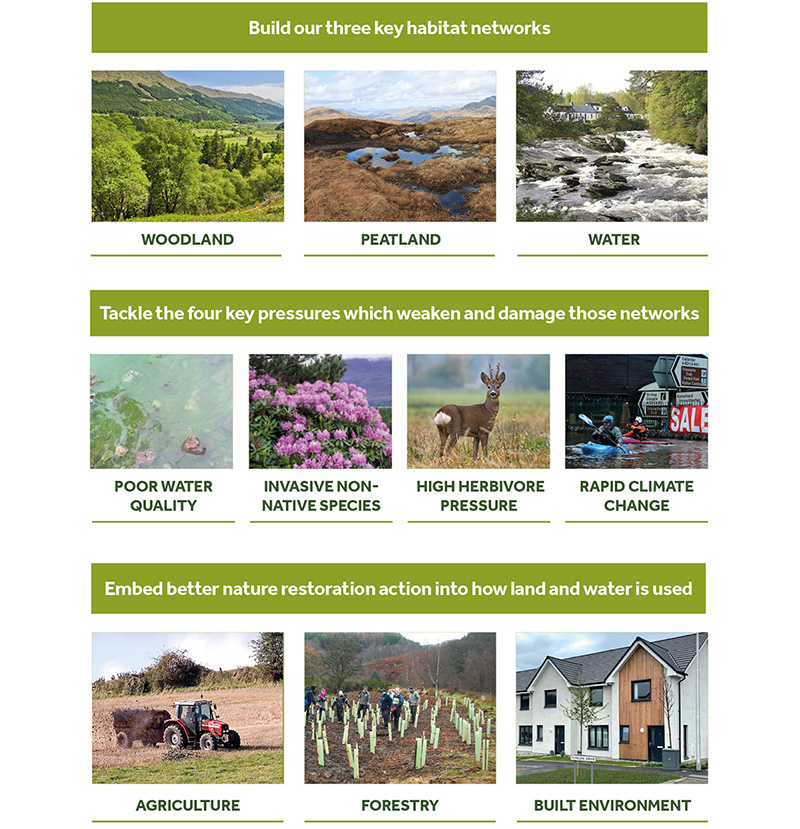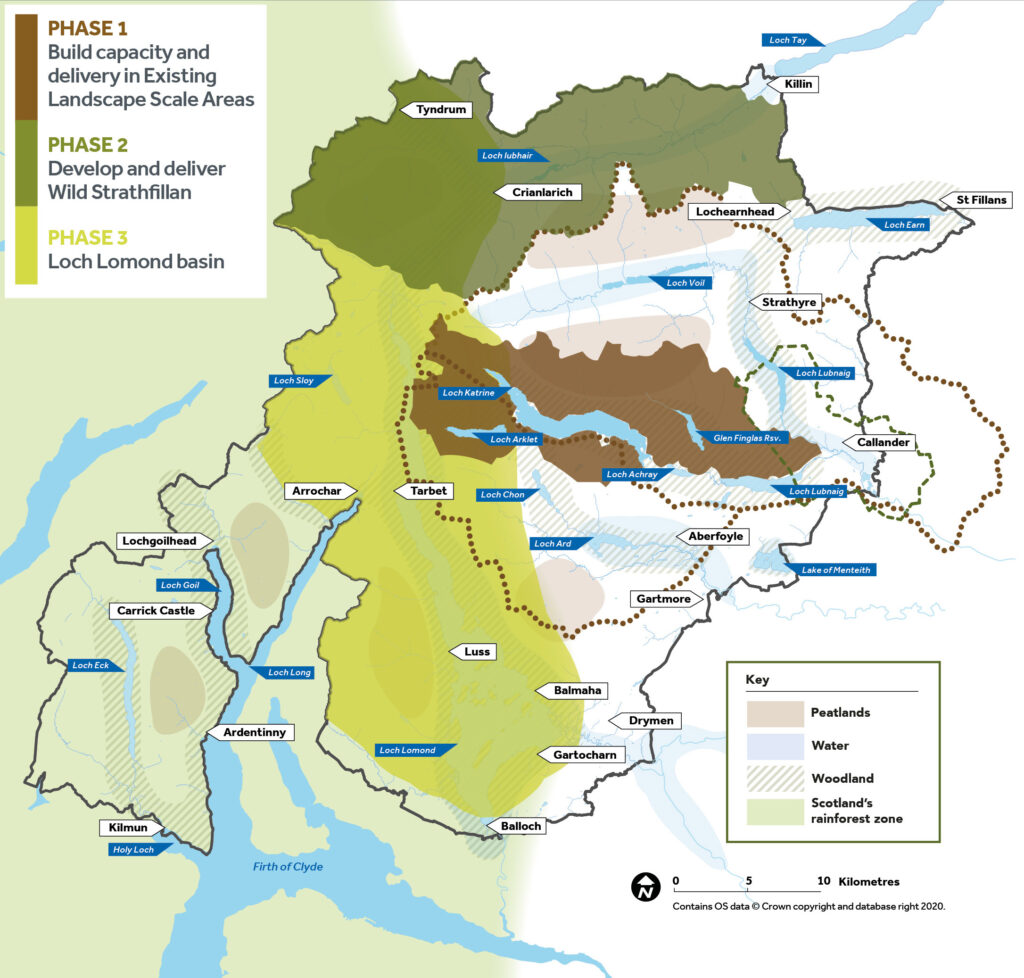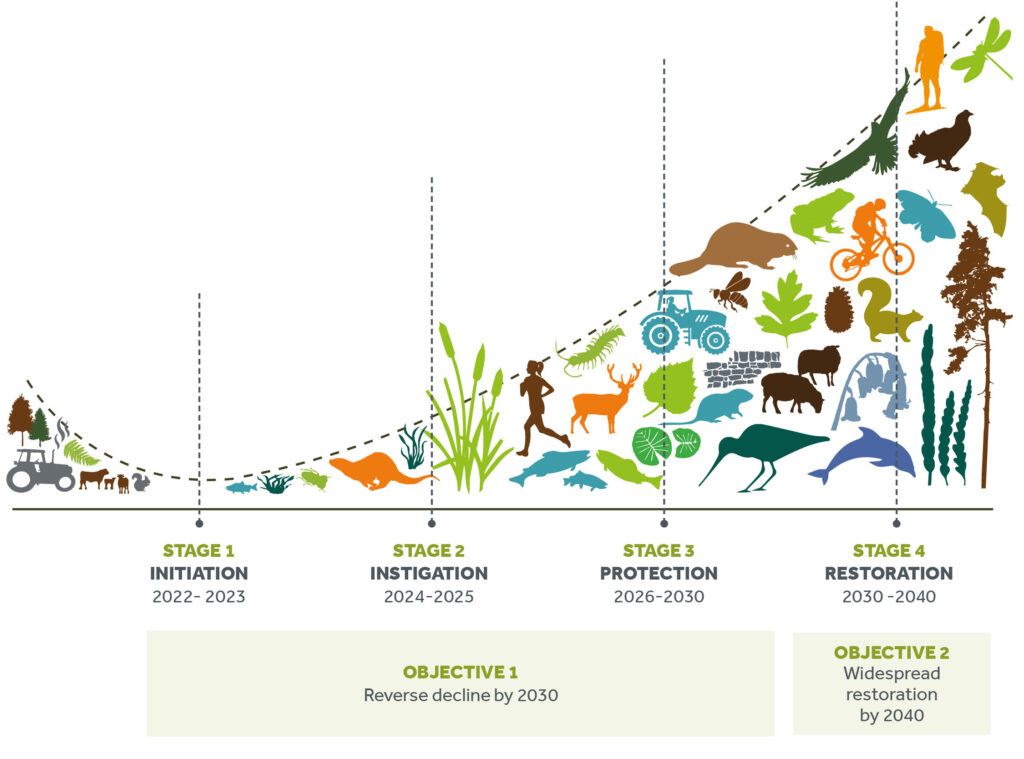
How will we restore nature?
The Future Nature Route Map is the first step in a long-term strategy and commitment to restore nature in the National Park. It also defines where we want to get to and maps out a structure for how we will get there. More detailed delivery plans, partnerships, projects and monitoring frameworks will continue to build on this structure.
- Future Nature principles
- Restoring nature at scale
- Landscape scale delivery
- Delivery pathways
- Stages to 2040
- Monitoring our progress
Future Nature principles
Our Future Nature principles will guide all of our work. We will:
- Work in partnership effectively across communities, agencies, NGOs and businesses
- Tackle the key pressures on nature
- Discuss and address systemic issues with honesty and energy
- Be agile, innovative and evidence-led
- Mainstream nature restoration thinking in our organisations and those of other stakeholders
- Deliver nature-based solutions which address the climate and biodiversity crisis
- Deliver nature restoration where people and livelihoods are integral
- Inform, involve and empower all to be involved
- Prioritise the protection and restoration of important existing habitats and designated sites
- Connect these sites through an integrated approach to land use at landscape-scale
Restoring nature at scale
To thrive and be resilient, nature needs to be part of a connected network across the National Park – and across the country. Future Nature takes a Nature Network approach; building, improving, and connecting existing core areas for nature and linking these across the landscape.
We believe that taking this landscape scale habitat approach is also key to thriving, resilient species in the National Park. Therefore whilst we will at times take approaches which focus on specific priority species, our primary focus will be on the wider habitats required for all species, including our own, to thrive.
Our well-connected living network will:
Build our three key habitat networks
These three networks need to be resilient, high quality and connected in order to function and
support the wealth of species, ecosystem services.
- Woodland
- Peatland
- Water
Tackle the four key pressures which weaken and damage those network
- Water Quality
- Invasive Non- Native Species
- Herbivore Pressure
- Climate Change
Embed better nature restoration action into how land and water is used
To deliver a well connected living network we will need to protect and improve key sites such as our designated SSSIs and SACs. We will also need to create new habitats through land use change. Perhaps most importantly we will need to connect and embed our habitat networks across all land uses in the National Park:
- Agriculture: delivering nature friendly farming to continue to support livelihoods and food production whilst supporting restoration of our soils, expansion of woodland and reduced grazing pressures
- Forestry: delivering timber production whilst expanding and improving our woodland network
- Communities: we need to embed nature friendly approaches into our housing, energy, business and recreation activities

Landscape scale delivery
Delivery pathways
To achieve the long-term vision and objectives we will develop a long-term Delivery Plan based around three pathways:
-
- PATHWAY 1: ACT – Action for Nature: Practical Delivery
- PATHWAY 2: FACILITATE – Mainstreaming Nature-Friendly Processes & Practice
- PATHWAY 3: INSPIRE – Engaging and Inspiring Action for Nature

Stages
We have broken down the time until 2040 into four key stages:
STAGE 1: INITIATION 2022- 2023
STAGE 2: INSTIGATION 2024-2025
STAGE 3: PROTECTION 2026-2030
STAGE 4: RESTORATION 2030 -2040
OBJECTIVE 1: Reverse decline by 2030 (Stage 1,2 & 3)
OBJECTIVE 2 Widespread restoration by 2040 (Stage 4)
Monitoring progress
We are committed to a long-term and consistent structure to monitor and assess progress towards this Future Nature Vision. In 2023 we will complete a review and agree the initial set of indicators which will form the basis of a dashboard and reporting structure. Using this structure we will commission and report on our first baseline State of Nature report by the end of 2023 which will establish in detail how the nature crisis is playing out in the National Park. This will further focus our delivery plans and the key indicators and targets which will drive out work in the coming National Park Partnership Plan period 2024-2029.
You can read more detail on how we will monitor progress in the full Future Nature Route Map.






